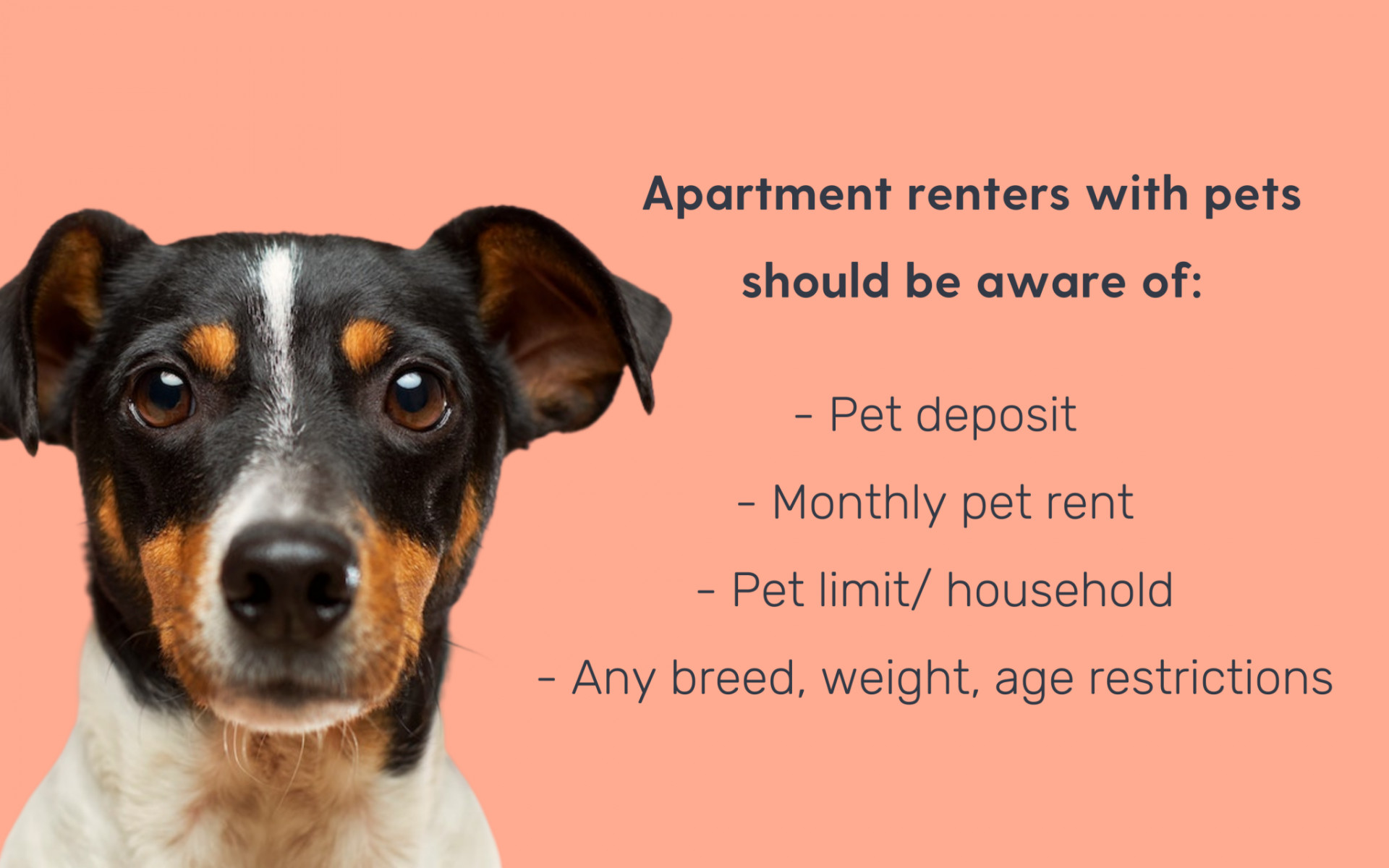The breakdown of renting with a pet

Just as much as we take pride in helping our clients find a space they can truly call “home,” we love it when we can provide that same end result for their pets, as well! It’s one thing finding an apartment you’re going to love, but it’s another thing to get the most out of an apartment for your pet. In this blog, we’re going to outline what the process looks like for apartment renters with all types of pets.
If there’s anything we can stress at the forefront, it’s that renting with a pet is going to require a little extra attention to detail and a few extra dollars. Don’t worry, we’ll explain it all…
Associated fees and guidelines
Within a lease agreement, you’re obviously going to be required to sign off on a mutual understanding that you’ll pay a certain amount of rent and exhibit certain tenant/neighborly behavior (to boil it way down). Well, when you add a pet to a lease, you’re signing off on your responsibility as a tenant and the responsibility as a tenant with a pet. So, just as much as a property aims to mitigate risk with each tenant through things such as deposits, monetary repercussions of breaking the lease, credit and background checks, and lease cosigners, they’ll kinda do the same with their pet tenants.
Here are fees and guidelines apartment renters can expect at a base level when leasing an apartment with a pet:
-Pet deposit (generally $250-$500 at signing, typically with half the amount eligible for a refund at the end of the lease)
-Monthly pet rent (generally $10-$25/month per pet)
-Maximum 2 pet/household limit (important note: “per household” and not “per lease signer/tenant”)
-Possible breed, weight, and age restrictions (most properties note on their websites what animal breeds they allow, any weight ranges or limitations, and if they don’t allow pets of a certain age)
If you’re building a budget to rent an apartment and you have a pet, you definitely want to make sure to call each property you’re interested in and ask them about the things listed above. That way there aren’t any surprises when you go to apply for the unit you want. If you want to take it one further, ask them if they’re running any move-in specials regarding pets; they just might be waving deposits!
What to know about restricted breeds, and age and weight limits
One of the first things to note in this section is that breed restrictions don’t just pertain to dog breeds. No matter what type of pet you have, you’ll want to be sure to specify that in any questions you’re asking prior to submitting an application (and the application fee for that matter). Some animal breeds may be considered “exotic” and the property can let you know whether or not that breed is permitted as an approved resident pet.
Most of the time, though, breed restrictions do apply to dogs. If a property does have dog breed restrictions, typically it’s for “aggressive breeds” and the mixes of those breeds. The most common aggressive dog breeds listed are German Shepherds, Mastiffs, Rottweilers, Pit bulls, Siberian Huskies, Cane Corsos, Dobermans, Boxers, Staffordshire Terriers, Chow Chows, Akitas, and wolf hybrids. The list of aggressive breeds can vary by property, city, and state but these are the most commonly noted breeds overall.
If you have a mixed breed or rescue dog and you’re not quite sure of what breeds they’re mixed with, you could always do a pet DNA test. They start at around $60 and can be purchased online or at pet supply stores. This step may seem excessive, but if your mixed-breed pup looks similar to any of the aggressive breeds listed by the property, DNA results showing they’re not related can reassure the property that your pup is good to go! In general, though, apartment properties do a great job of being as flexible as possible when it comes to mixed breeds.
When it comes to age and weight restrictions, most properties set a weight limit of about 99 pounds and sometimes restrict age to no less than a year old. More often than not, properties don’t have age restrictions, but most do adhere to weight limits.

ESAs and Service Animals
If you’re an apartment renter with an Emotional Support Animal (ESA) or service dog, there are a few things you should know. First, landlords and property groups are federally required by the Fair Housing Act to make what are called “reasonable accommodations” for tenants with an ESA or service dog. What this means is that since the animal is classified as an extension of the tenant’s wellbeing and not as a general pet, there are a few things that are required to take place:
-Fees and pet rent are waived for tenants with an ESA or service dog
-Breed restrictions and weight limits are lifted, or ESAs/services dogs are seen as an exception at properties that do not allow pets
-Landlords and property managers will require written permission from a licensed medical professional for the ESA or service dog – that’s standard.
-ESAs and service dogs are documented on the lease even though deposits, pet rent, and breed restrictions are waived
To learn more about leasing with an ESA or service dog, click here!
Need an ESA letter you can trust? We recommend Therapy Animal Hub! As a Smart City client, you’ll get 35% off with promo code “smartcity” and the confidence that your letter is from a reliable source. Just fill out a quick questionnaire, and you’ll be matched with a provider to wrap up the details for your pet’s letter and ongoing support if needed.
At the end of the day, leasing with a pet is pretty straightforward and properties do a really great job of putting a lot of that information on their websites so it’s easy to access. But, if you’re looking to find a property without breed restrictions or weight limits, we’ve got lists upon lists of places to tour and apply to! Visit our homepage, select the city you’re moving in or to, and be talking to your personal, free apartment locator within a matter of hours – Finding an apartment for you and your pet can be that easy (and yes, that free).


